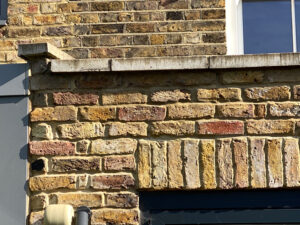Reason for contacting Pole
A freeholder contacted us as a consequence of a lack of landlord’s consent following the construction of a ground floor rear extension of a flat in Hampstead, North London.
 The landlord wanted reassurance that the property remained safe now that the ground floor extension was complete and for us to comment on damage to the first floor flat which may or may not have occurred as a consequence of the building work.
The landlord wanted reassurance that the property remained safe now that the ground floor extension was complete and for us to comment on damage to the first floor flat which may or may not have occurred as a consequence of the building work.
Pole Structural Engineers Reports were contacted by the landlord who was seeking a reputable, independent, and highly experienced structural engineering firm specialising in structural engineers reports in Hampstead and the North London area.
Pole service offer
In response to the client’s requirements our qualified Chartered Structural Engineer recommended a Specific Inspection Report.
There are two distinct types of structural reports:
1) A localised, very specific and limited Structural Engineers Defect Report or a Specific Structural Inspection Report (SSI);
2) A broader Structural Engineers General Movement Report, or General Structural Inspection Report (GSI), which focuses on matters of cracking and movement only.
We provided a variation on our General Movement Report, concentrating on the rear of the property and in particular the condition of the first floor flat.
Our report
This mid-terrace period property had long been converted into a separate ground and first floor flats.
A single-storey rear extension with a side return had been built some five years earlier and, whilst Town Planning permission and Building Regulations approval had been obtained, the ground floor lessee had not obtained the landlord’s consent.
In recent times, the landlord had noted cracking to the first floor flat and was concerned that this may have occurred either during the building work or due to a lack of support following the removal of various walls to facilitate the ground floor rear extension.
Findings
We found the property to be commensurate with age with the normal signs of historic settlement, which were long standing and separate from the current issue.
The first floor flat decoration was extremely dated with a range of normal plaster cracks due to old lath and plaster and very aged decoration. There were all manner of shrinkage cracks and normal vertical gaps between the abutting walls, and cracks between wall and ceilings, which were entirely normal.
There were no signs of any deflection-related cracking and, most importantly, no sign of any structural distress in any of the loadbearing walls above.
All of the damage was confined to the non-loadbearing partitions and, as mentioned previously, to the dated lath and plaster which had not been decorated for decades.
Conclusions
We were able to reassure the landlord that the property remained safe. We pointed out that all of the cracks were normal plaster cracks. These may or may not have occurred during the building works in the flat below as, no matter how careful a builder is, there is always some physical vibration and usual to expect minor cracking in such walls during building work.
The learning points include remembering that, leaseholders are obliged to notify their landlord when undertaking any material building work and the landlords consent is always required for extensions. This includes when those undertaking the works partly own the freehold of the property, as this is completely separate from the leasehold interest.
Whilst in theory the Party Wall etc. Act 1996 does not apply when undertaking works to the ground floor in terms of its relationship with the first floor, it is always prudent to have a schedule of condition to record the state of the decoration before and after the building work. This protects both parties, and the builder, and allows a fair conclusion to any damage caused.
Can we help you?
If you would like advice on any structural aspects of your property, our structural engineers’ are here to help you so please don’t hesitate to contact us.




